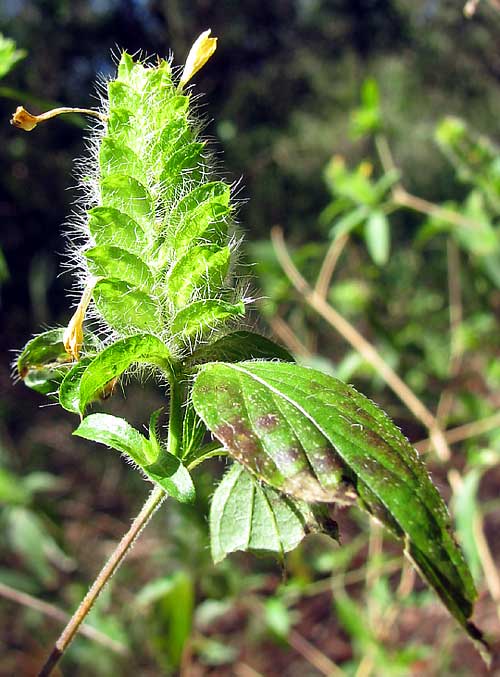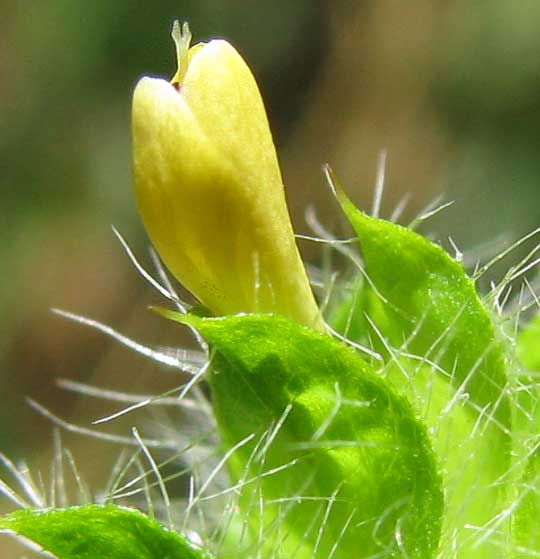Excerpts from Jim Conrad's
Naturalist Newsletter
from the February 14, 2010 Newsletter issued from Hacienda Chichen Resort beside Chichén Itzá Ruins, central Yucatán, MÉXICO; limestone bedrock, elevation ~39m (~128ft), ~N20.676°, ~W88.569°
THE HAIRY FOURNWORT

Above you see a flowering weed that these days stands ankle- to knee-high along trails through woods and at woods edges. The blossom's yellow corolla shown at the top, right of the inflorescence is only a little over half an inch long (17 mm), so it it's not the flowers that draw your attention. What's eye catching is how the green, leafy bracts (modified leaves) below each flower are "four-ranked". Instead of the bracts spiraling around the central axis the way flowers and bracts usually do, they form four-cornered structures reminiscent of pagodas.
Distributed in disturbed habitats from the US Southwest throughout tropical America, in English one of its names is Hairy Fournwort. In Spanish it's often called Oltillo, and in Maya Sak-chi'ilib. It's TETRAMERIUM NERVOSUM, and it's a member of the Acanthus Family, the Acanthaceae. The oversized bracts subtending each blossom are an important field mark for members of the Acanthus Family.
A neat picture showing the forked stigma peeking from the corolla and ready to receive pollen grains is below:

Really it's striking how many members of the Acanthus Family are still flowering here in the heart of the dry season when most herbaceous plants have died back and many woody plants have lost their leaves. Up North this family is not frequently encountered but a walk in our woods here will turn up two species of Wild Petunias (genus Ruellia), the Yellow Barleria, and at least two species of red-flowered Aphelandras, all in the Acanthus Family.
Las Plantas Medicinales de México reports leaves of Tetramerium being used "for the urine."